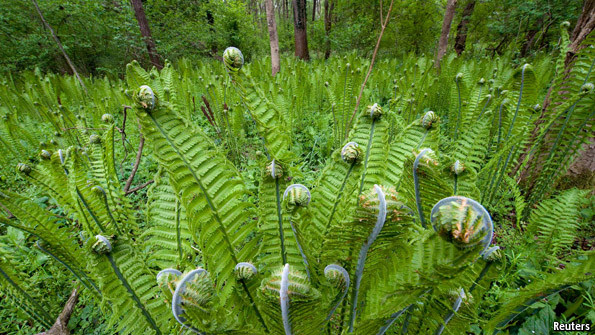The plants are classified into four main groups. The plants without vascular tissues, i.e. no roots, stems and leaves, are mosses, hornworts and liverworts. The plants that have vascular tissues but seedless are ferns. For the
vascular plants having seeds, the non-flowering plants are conifers, while the flowering plants are angiosperms.
Some plants have developed special features for adapting
extreme environments. Xerophytes survive in dryness, as they have widespread roots, barrel-sharped stems and
needle-shaped leaves. Hydrophytes possess broad leaves for floating to maximize sunlight absorption on water surface. Epiphytes grow on other plants, occupying a better position for photosynthesis and pollination. Halophytes have to solve high salinity problem, thus developing root membranes or glands for excluding and excreting salt respectively.
The plants are classified into four main groups. The plants without vascular tissues, i.e. no roots, stems and leaves, are mosses, hornworts and liverworts. The plants that have vascular tissues but seedless are ferns. For the
vascular plants having seeds, the non-flowering plants are conifers, while the flowering plants are angiosperms.
